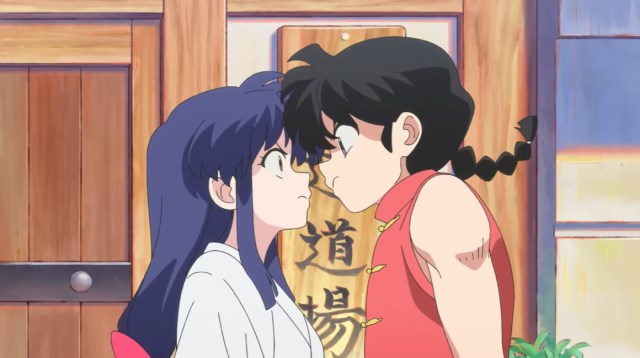
Rumiko Takahashi’s legendary martial arts comedy is back, and we take a look at what’s changed and what hasn’t.
The fall anime season recently started in Japan, and as always there are a couple of series that look intriguing, but which I know I’m not going to be able to get around to until after they’ve aired their last episode. But Ranma 1/2? That’s a series I’ll gladly stay up until 12:55 a.m. to watch ASAP, which is what I’ve done for the past two weeks.
▼ Preview video for the new Ranma 1/2 series, which airs on Nippon Television in Japan and streams internationally on Netflix
Let’s start with a little bit of background. Ranma 1/2 started as a manga by legendary creator Rumiko Takahashi. The series is centered on teenage martial artist Ranma Saotome, who, as a result of a curse, turns into a girl when doused with cold water, with a counter-splashing of hot water the only way to reverse the effects. While attempting in vain to live the life of an ordinary high school student, Ranma rapidly acquires a growing roster of fiancés and martial arts rivals, many with water-based curses of their own, creating constant circumstances where violence, romance, or laughter (and often all three) could break out at any moment.
Ranma was the third big hit for Takahashi, following wacky sci-fi comedy Urusei Yatsura and coming-of-age-in-the-Bubble Economy romance Maison Ikkoku. It was Takahashi’s first series to become an international success, though, earning passionate fanbases elsewhere in Asia and in the U.S. thanks in large part to its anime adaptation, which originally aired on Japanese TV from 1989 to 1992 and also had a number of films and OVA/direct-to-video episodes through 1996, followed by a one-off episode in 2008.
But in June, just as the anime TV remake of Urusei Yatsura wrapped up, the announcement came that Ranma 1/2 was getting a new anime TV series too, which premiered on October 6. So after two episodes, how does the new Ranma 1/2 compare to the original TV series? Let’s take a look at it from a variety of angles.
● Visuals
The new Ranma anime doesn’t share any of the visual staff of the original TV series, and while the characters are all instantly recognizable, they also look a fair bit different from how they used to. In simple terms, the new designs are plumper. There’s some additional soft roundness to hips, legs, shoulders, and cheeks, and facial expressions too.
The difference might be a little jarring for returning Ranma fans, especially ones whose most distinct memories are of the later manga chapters/original anime installments. Over the course of the manga’s nine-year run, Takahashi’s own artwork evolved to become a little more angular than it was in the beginning, and over the seven years of the anime adaptation character designer Atsuko Nakajima’s take on the characters became considerably sharper still, and also featured large, dark pupils for the characters.
▼ The original Ranma‘s later art style can be seen in this preview video for their OVAs and movies.
Compared to Nakajima’s late-installment work, new Ranma 1/2 character designer Hiromi Taniguchi’s style is much, much closer to the Takahashi’s artwork from the corresponding early chapters that the new TV series has covered so far, but with a dash of additional modern-trend softness that makes the characters look less like the manga originals than they did in the early episodes of the old Ranma TV series.
The bigger change, though, is in the color design. Whereas the original Ranma TV series had a pretty high-contrast aesthetic, MAPPA, the studio handling the new series, has opted for a softer palate, sometimes with borderline-pastels. The most noticeable change is in female Ranma’s hair, which was a vivid red before, but is now pink, Similarly, Akane (Ranma’s arranged-marriage fiancé) was previously depicted having black or dark blue hair, but it’s several shades of blue lighter now. At times, the new color scheme can look a little washed out, particularly if you’re accustomed to the brighter bright colors and darker dark ones from before.
Another major change is the new Ranma’s propensity for putting manga-style written sound effects on screen. It’s an interesting choice, but depending on whether or not you can read the Japanese text, might be more distracting that entertaining.
Whether those changes are for the better or worse is going to be a matter of personal taste, as is the overall “cleaner” look of the modern digital animation over the original’s hand-drawn-and-painted cels. You definitely can’t call the new Ranma a bad-looking show, and it’s clear right away that it’s working with a larger budget than the original had. Popular as it would go on to be, the original Ranma anime has more than a few times where time/cost constraints clearly kept the animators from being able to convey a sense of speed and weight to the fight scenes. With prestige-series funding, the new Ranma 1/2’s punches, kicks, and sign-bashings feel crunchier, and not only does that make the action sequences more exciting, it also adds extra impact to the slapstick comedy that’s as much a part of the series’ charm, if not even more, than the serious fistfights.
● Sound
The original Ranma series featured one of the most star-studded voice casts ever assembled, one so iconic that the producers of the new series brought as many of them back as they could. Pretty much the entire core cast is returning, with 59-year-old Kappei Yamaguchi and 62-year old Noriko Hidaka reprising their roles as male Ranma and Akane, a pair of first-year high school students. Shockingly, more than 30 years after their original performances, neither one of them sounds like they’ve aged a day, and Kikuko Inoue and Minami Takayama, once again playing Akane’s older sisters Kasumi and Nabuki, also pick up vocally right where they’d left off. It’s actually Megumi Hayashibara’s performance as female Ranma that seems the most changed, sounding slightly deeper in pitch than in the original anime, but still with all of the brash confidence that largely defines the character’s personality.
In contrast to the returning voice cast, the new Ranma gets new opening and ending themes. The fun opener, “Iinazukkyun” (a mashup of inazuke/“fiancé” and kyun, an excited feeling in your heart) from J-pop mega-star Ado keeps with the Chinese audio motifs of the original anime’s “Jaja Uma ni Sasenaide,” though it’s kind of sad to not have the incredibly catchy lyrics of “yappappaa, yappappaa” anymore.
On the other hand, the new ending theme, “Anta Nante” (a derogatory way of saying, loosely, “someone like you”), sung by Riria, is a relaxed number with a cozy warmth, making it a pretty big departure from the swirl of emotions that made up the original anime’s closer “Platonic Tsuranuite.”
● Story, setting, and pacing
In its very first frame, the new Ranma anime declares its setting to be “somewhere in Tokyo in the 1980s,” taking the same course as the Urusei Yatsura remake anime by leaving its setting exactly the same as the original work’s. With Ranma’s initial run straddling the late ‘80s and early ‘90s, it’s not exactly a period piece, but you’re not going to see social media, email, cell phones, or even pagers (which middle-class kids like Ranma and Akane wouldn’t have had at that time in Japan). Like in the original, communication in the new Ranma anime is going to have to be either face-to-face, with immediate, direct (and perhaps violent) repercussions, or relayed through handwritten notes, third-parties, or other comedic misunderstanding-conducive means.
The overall atmosphere, likewise, is spot-on with the original so far, with comedy being the main focus while also laying some groundwork for deeper character interactions later on. The new Ranma doesn’t appear to have any desire to recontextualize itself or make bold thematic statements from a position of being part of a hugely successful pop culture franchise, and instead seems focused on telling a story and providing laughs.
One point of divergence, though, is in on-screen nudity. Considering how often someone in Ranma needs to change out of wet clothes or hop into a warm bath to deal with the effects of their curse, the series has a lot of scenes where someone is naked. The new anime is more reserved in how it depicts this, keeping the camera angled or bath towels placed to show less bare skin, though the first episode of the new anime does include one unobstructed topless shot of female Ranma, with no nipples represented, and an unusual nude-from-behind shot where the character has no butt crack. Generally speaking, though, when there’s nudity in Ranma it’s meant to be more for comedic effect than titillation, and the more modest depictions haven’t majorly impeded that so far.
As for pacing, the first episode is essentially a direct remake of the old anime’s first episode, right down to several lines of dialogue being word-for-word the same. That’s not to its detriment, though, as there’s quite a bit of world building and character introduction work that needs to be done. The second episode picks up the pace considerably, though, covering material that was spread out over two or three episodes in the original anime, and also has what appears to be the new anime’s first joke not present in the original, showing how Ranma’s upperclassman Kuno manages to change from his school uniform to his kendo outfit without making a trip to the locker room.
● So, is it worth watching?
If you never watched the original Ranma and the decades-old visuals are a hurdle for you, the new anime’s cleaner, higher-budget look can go toe-to-toe with just about any other action/comedy series out there this season. The accelerated pace of the second episode should also be a positive for those intimidated by the original anime’s 161-episode length, since it suggests a zippier narrative (and to be fair, the original Ranma anime’s leisurely start got it initially cancelled before coming back with a skip to later in the story to help reel in viewers). The fact that the new Ranma is a straight remake, as opposed to an alternate retelling or pseudo-sequel, also means that there’s no prior knowledge of the series required or Easter eggs to make you feel like you’re missing out on something. It’s telling its story from the start, so it’s a fine place to jump on.
And if you’re someone who enjoyed the original? You’ll probably get a lot of enjoyment out of the new series too, even if the story looks to be the same. The new Ranma is clearly made with lots of love and a high respect for the previous adaptation and manga. , Especially with the original voice cast involved, it’s similar to the 1993 Ranma 1/2 Christmas party OVA, in that you probably know what’s going to happen, but it’s still a whole lot of fun to be hanging out with these characters for a while.
Related: Ranma 1/2 anime official website, Ranma 1/2 anime on Netlfix
Images: YouTube/MAPPA CHANNEL
● Want to hear about SoraNews24’s latest articles as soon as they’re published? Follow us on Facebook and Twitter!
Follow Casey on Twitter, where watching Ranma 1/2 left him with a lifelong love of the emphatic particle ze.

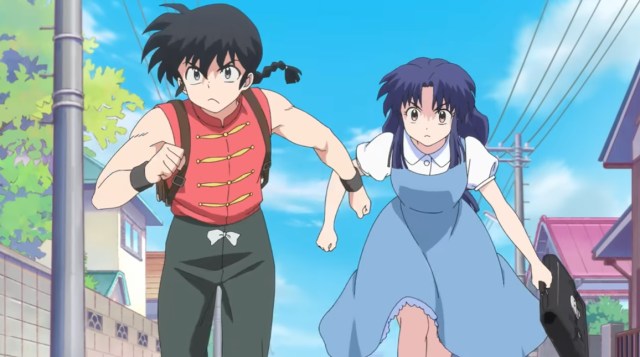
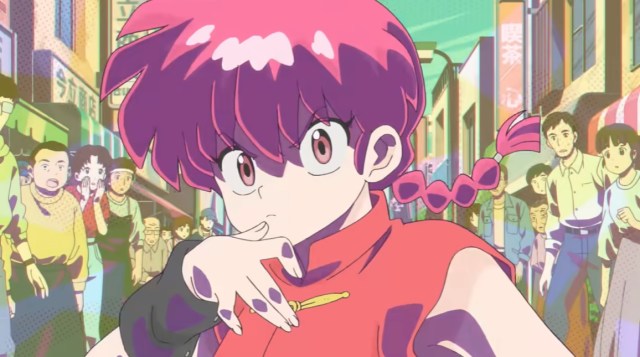
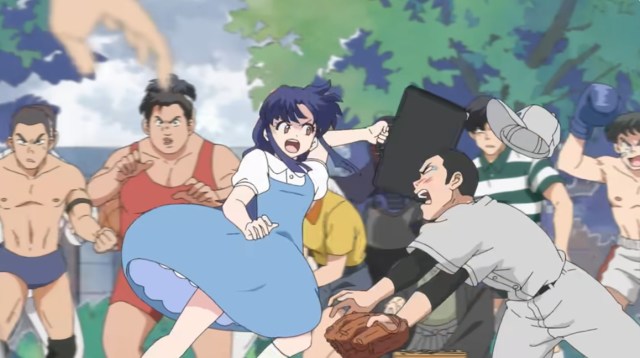
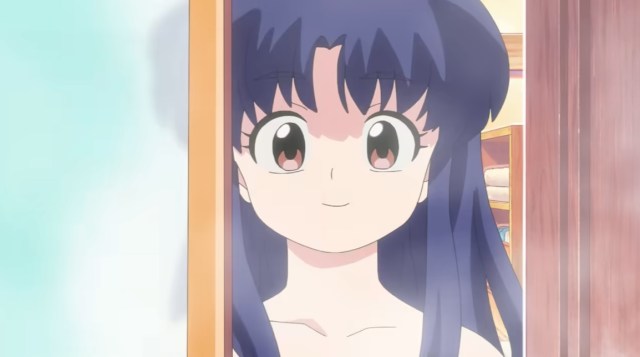
 New Ranma 1/2 anime preview reveals Netflix streaming, returning all-star voice cast【Video】
New Ranma 1/2 anime preview reveals Netflix streaming, returning all-star voice cast【Video】 New anime for legendary series Ranma 1/2 announced【Video】
New anime for legendary series Ranma 1/2 announced【Video】 New line of Ranma 1/2 lifestyle and fashion anime goods is here to help fans feel complete【Pics】
New line of Ranma 1/2 lifestyle and fashion anime goods is here to help fans feel complete【Pics】 Tokyo’s Ranma 1/2 cafe is open, and we just stuffed ourselves with awesome anime nostalgia
Tokyo’s Ranma 1/2 cafe is open, and we just stuffed ourselves with awesome anime nostalgia Ranma 1/2’s creator and voice cast stars stop by the Ranma 1/2 Cafe in Tokyo【Photos】
Ranma 1/2’s creator and voice cast stars stop by the Ranma 1/2 Cafe in Tokyo【Photos】 Japanese thug wear from Birth Japan perfect for those breaking bad next year
Japanese thug wear from Birth Japan perfect for those breaking bad next year We found possibly the quietest Japanese-style hotel in Tokyo’s bustling Shinjuku district
We found possibly the quietest Japanese-style hotel in Tokyo’s bustling Shinjuku district How safe is Japan? New interactive map reveals reports of crime around the country
How safe is Japan? New interactive map reveals reports of crime around the country Nagoya’s dark-red miso has continued to capture tastebuds for generations
Nagoya’s dark-red miso has continued to capture tastebuds for generations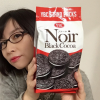 Japan’s new imitation Oreos are here, but how do they compare to the made-in-China real deal?
Japan’s new imitation Oreos are here, but how do they compare to the made-in-China real deal? Pizza keychains from Japan are both cute and practical
Pizza keychains from Japan are both cute and practical New Japanese menstrual product seeks to help women spot unidentified iron deficiencies
New Japanese menstrual product seeks to help women spot unidentified iron deficiencies 7-Eleven refuses to cooperate with municipal request to cover up its porno magazines in Japan
7-Eleven refuses to cooperate with municipal request to cover up its porno magazines in Japan We try the new Family Mart Uji matcha sweets before they go on sale in Japan
We try the new Family Mart Uji matcha sweets before they go on sale in Japan Watch out! Pokémon Fusion gets a lot more real with some wicked fan art【Photos】
Watch out! Pokémon Fusion gets a lot more real with some wicked fan art【Photos】 Disillusionment at Tsukiji’s tourist-target prices led us to a great ramen restaurant in Tokyo
Disillusionment at Tsukiji’s tourist-target prices led us to a great ramen restaurant in Tokyo Japan may add Japanese language proficiency, lifestyle classes to permanent foreign resident requirements
Japan may add Japanese language proficiency, lifestyle classes to permanent foreign resident requirements Lacquerware supplier to emperor of Japan and Pokémon team up for new tableware
Lacquerware supplier to emperor of Japan and Pokémon team up for new tableware Starbucks Japan releases new zodiac chilled cup drink for 2026
Starbucks Japan releases new zodiac chilled cup drink for 2026 7-Eleven Japan’s ramen-cooking robot whipped us up a bowl of noodles【Taste test】
7-Eleven Japan’s ramen-cooking robot whipped us up a bowl of noodles【Taste test】 Cyberpunk anime meets traditional culture in Ghost in the Shell gold leaf Japanese changing screens
Cyberpunk anime meets traditional culture in Ghost in the Shell gold leaf Japanese changing screens 7 great places to see Mt. Fuji from without having to climb it
7 great places to see Mt. Fuji from without having to climb it Hello Kitty Choco Egg figures are an adorable trip through three periods of Japanese pop culture【Pics】
Hello Kitty Choco Egg figures are an adorable trip through three periods of Japanese pop culture【Pics】 Japan’s otoshidama tradition of giving kids money at New Year’s gets a social welfare upgrade
Japan’s otoshidama tradition of giving kids money at New Year’s gets a social welfare upgrade Starbucks Japan ready to get Year of the Horse started with adorable drinkware and plushies【Pics】
Starbucks Japan ready to get Year of the Horse started with adorable drinkware and plushies【Pics】 Japan’s human washing machines will go on sale to general public, demos to be held in Tokyo
Japan’s human washing machines will go on sale to general public, demos to be held in Tokyo 7-Eleven Japan starts new temporary luggage storage service in over 300 branches
7-Eleven Japan starts new temporary luggage storage service in over 300 branches Starbucks teams up with 166-year-old Kyoto doll maker for Year of the Horse decorations【Photos】
Starbucks teams up with 166-year-old Kyoto doll maker for Year of the Horse decorations【Photos】 Tokyo considering law requiring more trash cans following litter increase in heavily touristed area
Tokyo considering law requiring more trash cans following litter increase in heavily touristed area Tokyo’s Tsukiji sushi neighborhood asks tour groups to stay away for the rest of the month
Tokyo’s Tsukiji sushi neighborhood asks tour groups to stay away for the rest of the month Nintendo’s Kirby now delivering orders at Kura Sushi restaurants, but not in Japan
Nintendo’s Kirby now delivering orders at Kura Sushi restaurants, but not in Japan Tokyo event lets you travel back in time, for free, to celebrate 100 years since Showa era start
Tokyo event lets you travel back in time, for free, to celebrate 100 years since Showa era start Sanrio theme park in Japan announces plans to expand into a Sanrio resort
Sanrio theme park in Japan announces plans to expand into a Sanrio resort Stamina-destroying “Paralysis Noodles” are Tokyo’s newest over-the-top ramen innovation
Stamina-destroying “Paralysis Noodles” are Tokyo’s newest over-the-top ramen innovation Survey asks foreign tourists what bothered them in Japan, more than half gave same answer
Survey asks foreign tourists what bothered them in Japan, more than half gave same answer Japan’s deadliest food claims more victims, but why do people keep eating it for New Year’s?
Japan’s deadliest food claims more victims, but why do people keep eating it for New Year’s? We deeply regret going into this tunnel on our walk in the mountains of Japan
We deeply regret going into this tunnel on our walk in the mountains of Japan Studio Ghibli releases Kodama forest spirits from Princess Mononoke to light up your home
Studio Ghibli releases Kodama forest spirits from Princess Mononoke to light up your home Major Japanese hotel chain says reservations via overseas booking sites may not be valid
Major Japanese hotel chain says reservations via overseas booking sites may not be valid Put sesame oil in your coffee? Japanese maker says it’s the best way to start your day【Taste test】
Put sesame oil in your coffee? Japanese maker says it’s the best way to start your day【Taste test】 No more using real katana for tourism activities, Japan’s National Police Agency says
No more using real katana for tourism activities, Japan’s National Police Agency says The top 10 annoying foreign tourist behaviors on trains, as chosen by Japanese people【Survey】
The top 10 annoying foreign tourist behaviors on trains, as chosen by Japanese people【Survey】 Starbucks Japan reveals new sakura drinkware collection, inspired by evening cherry blossoms
Starbucks Japan reveals new sakura drinkware collection, inspired by evening cherry blossoms Instant cozy anime cosplay can be yours with new Ranma 1/2 roomwear sets【Photos】
Instant cozy anime cosplay can be yours with new Ranma 1/2 roomwear sets【Photos】 Ranma 1/2 Cafe opening in three Japanese cities, features food with transformable flavors
Ranma 1/2 Cafe opening in three Japanese cities, features food with transformable flavors Ranma 1/2 is half of team-up with Felissimo for a whole lot of cool fashion and lifestyle items
Ranma 1/2 is half of team-up with Felissimo for a whole lot of cool fashion and lifestyle items New Ranma 1/2 fashion bag lineup is 100-percent retro anime stylish【Photos】
New Ranma 1/2 fashion bag lineup is 100-percent retro anime stylish【Photos】 30th anniversary celebratory Ranma 1/2 Cafes to open in three major Japanese cities【Pictures】
30th anniversary celebratory Ranma 1/2 Cafes to open in three major Japanese cities【Pictures】 Artist Rumiko Takahashi’s popular characters Ranma and Lum have now become… instant ramen!
Artist Rumiko Takahashi’s popular characters Ranma and Lum have now become… instant ramen! Is the Spy x Family anime movie worth your time?【SoraReview】
Is the Spy x Family anime movie worth your time?【SoraReview】 Indulge in some ’90s anime nostalgia with Ranma ½ 30th anniversary line of apparel
Indulge in some ’90s anime nostalgia with Ranma ½ 30th anniversary line of apparel What’s the best Rumiko Takahashi anime of all time? Fans decide, pick best characters too【Survey】
What’s the best Rumiko Takahashi anime of all time? Fans decide, pick best characters too【Survey】 【Conspiracy theory】 Does secret code show Rumiko Takahashi’s next manga serial will be her last?
【Conspiracy theory】 Does secret code show Rumiko Takahashi’s next manga serial will be her last? First details, title of Inu Yasha creator Rumiko Takahashi’s new manga series announced
First details, title of Inu Yasha creator Rumiko Takahashi’s new manga series announced Rumiko Takahashi returns! Creator of Inu-Yasha, Ranma 1/2 announces new manga serial
Rumiko Takahashi returns! Creator of Inu-Yasha, Ranma 1/2 announces new manga serial Inuyasha vs. Ranma? Rumiko Takahashi talks about who’d win a battle royale of her series’ stars
Inuyasha vs. Ranma? Rumiko Takahashi talks about who’d win a battle royale of her series’ stars Urusei Yatsura store opening in Japan to celebrate the manga/anime hit’s 40th anniversary
Urusei Yatsura store opening in Japan to celebrate the manga/anime hit’s 40th anniversary Rumiko Takahashi explains why her characters can’t ever just come right out and say “I love you”
Rumiko Takahashi explains why her characters can’t ever just come right out and say “I love you” Top cosplayer Enako to dress as Inuyasha’s Kagome, Urusei Yatsura’s Lum in Takahashi cosplay book
Top cosplayer Enako to dress as Inuyasha’s Kagome, Urusei Yatsura’s Lum in Takahashi cosplay book
Leave a Reply